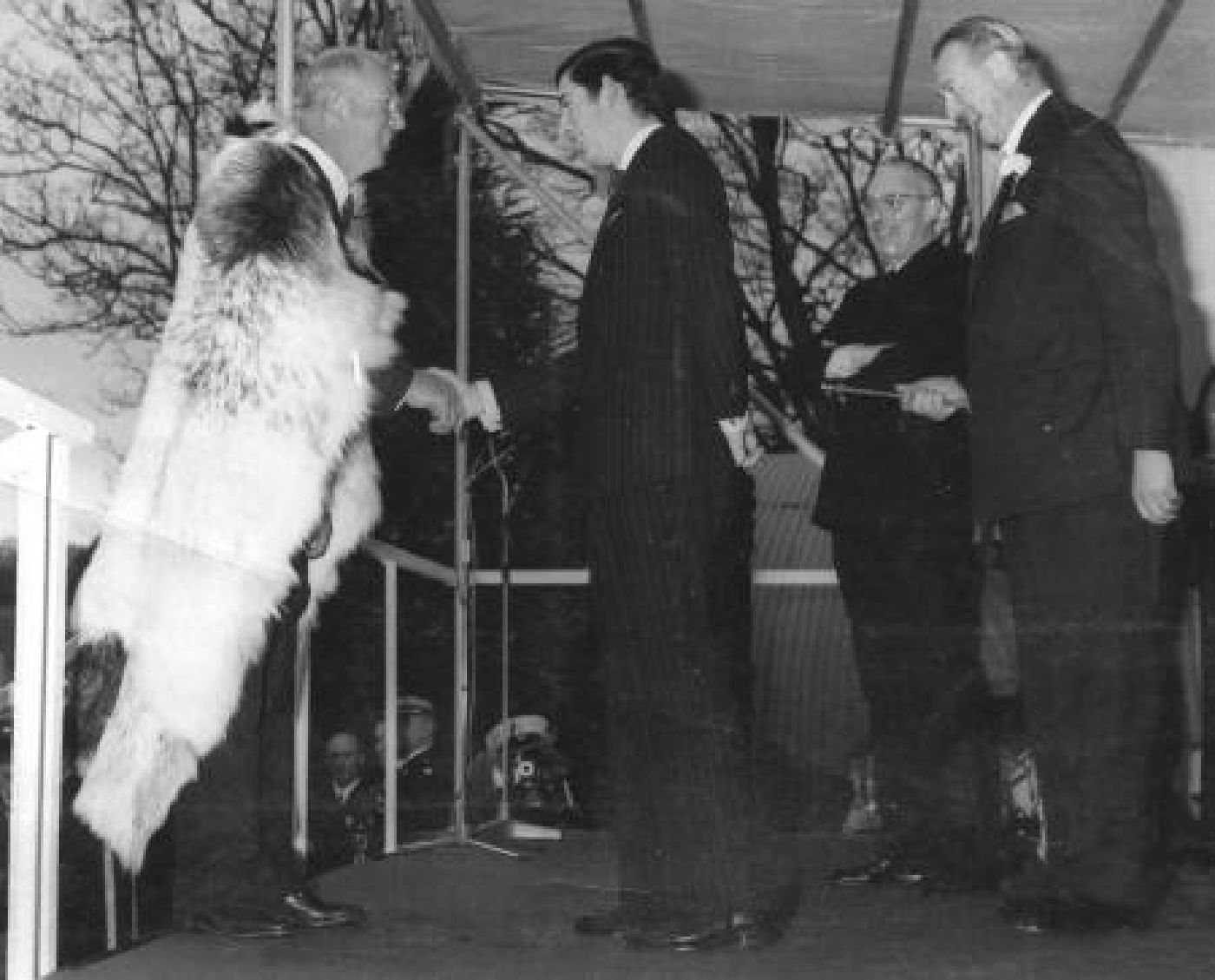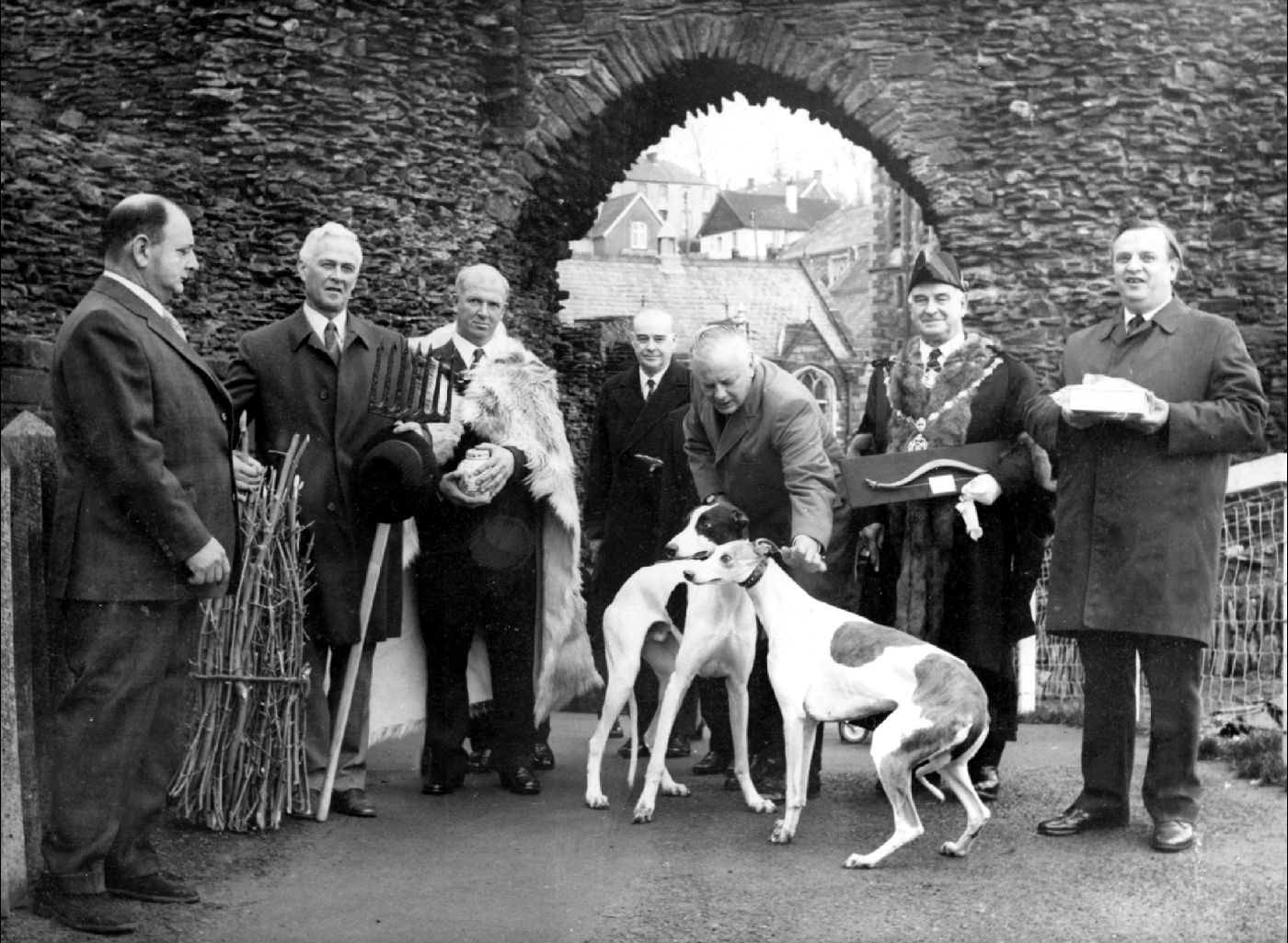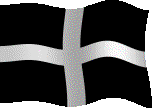Week St. Mary's Bethuel Hutchings, of Swannacott, was presented to the Duke of Windsor whilst wearing the goatskin mantle on his visit as Duke of Cornwall to Launceston on 25th May 1921. He repeated this honour by being presented to King George VI on 1st December 1937.
The King was already crowned when in 1937 he made a state entry into the Castle, being welcomed with age-old ceremonial affairs and presented with feudal dues - a pound of pepper and one hundred shillings, to name just two, which were set down in a charter of 1230 by Richard, King of the Romans, then Earl of Cornwall. Launceston Castle is run by English Heritage and owned by the Duchy of Cornwall.
William the Conqueror allocated Cornwall to one of his relatives, and by 1337 Edward III created the Duchy as an estate for the eldest sons of the monarch. This has remained the case down the ages, through 24 Dukes of Cornwall, to Prince Charles today. Edward the Black Prince rode into Launceston Castle in 1337 to be proclaimed the first Duke of Cornwall. This was the first Duchy to be created in England. Apart from owning large estates the Dukes of Cornwall claimed taxes from tin and other mineral rights. The taxes on tin continued until 1828, although after this date they still received income from mineral rights.
In 1760 the Crown gave up its estates to the nation in exchange for an income, but the Duchy of Cornwall estates were not included in this deal.
It was customary for certain people to meet with the Duke of Cornwall and present him with gifts appropriate for his visit to his County, although not all of the gifts would be of much use today. Prince Charles became Duke of Cornwall at the age of 4 when his mother ascended the throne. However it was not for another 20 years, in 1973 that he was actually proclaimed Duke of Cornwall in Launceston Castle.
• On the 19th November 1973, the Manors of Swannacott and Week St. Mary in the Hundred of Stratton held by Knight Service, and their representatives appeared within goatskin mantles before the Duchy Court at Launceston. Bethuel's grandson, Keith Hutchings, represented these Manors.
The Manor of Cabillia was held by the service of paying to the Duke one grey cloak as often as he should pass through Cornwall and the Manor of Pengelly was held by Serjeanty of receiving the grey riding cloak when the Duke should be coming towards Cornwall and of carrying that cloak with the Duke throughout all Cornwall.
Then the Bailiff recites each Tenant, his holding and the rent offered, in token, in recollection of days long past and each Tenant in turn presents his rent in the following order:
- The Mayor and Commonalty of the Borough of Launceston held the Borough in Fee Farm rendering therefore one hundred shillings and one pound of pepper. The Mayor of Launceston makes the presentation.
- The City of Truro will render one Bow de Arburne. The Mayor of Truro makes the presentation.
- The Manor of Elerky in Veryan in the West Division of the Hundred of Powder held, prior to dismemberment, by the render of a brace of greyhounds. Lt. Col. J. A. Molesworth-St. Aubyn makes the presentation.
- The Manor or Barton of Penvose in the parish of St. Tudy in the Hundred of Trigg held under knight services by the render of a pair of gilt spurs. Mr. M. W. B. Scurrah makes the presentation.
- Battons otherwise Battens in the parish of Northhill in the North Division of the Hundred of East held under Knight Service by the render of one pound of cummin. Mr. E. B. Latham makes the presentation.
- The Manor of Clymeslond otherwise Stoke Climsland in the North Division of the Hundred of East rendered a salmon spear and one carriage of wood daily when Our Lord the Duke should come to Cornwall. Mr. K. J. Uglow makes the presentation.
- The Manors of Swannacott and Week St. Mary in the Hundred of Stratton held by Knight Service, and their representatives had to appear within goatskin mantles before the Duchy Court at Launceston. Mr. L. K. Hutchings represents these Manors.
- The Manor of Trevalga held by the render of one pair of white gloves. Mr. C. G. Peter, Steward of the Manor, held by Marlborough College, makes the presentation.
Having given each a white rod, His Royal Highness then says:
"I hereby confirm you, and those you represent, Tenants and give you and them peaceable and quiet seizin and possession of the Manors, Lands and Tenements which you hold or represent according to ancient custom."
Then the Bailiff says: "Let every man depart and keep his day here upon a new warning and so God Save The Queen and the Lord of this Honour."
Most of the inanimate objects can be seen at Launceston Museum.


